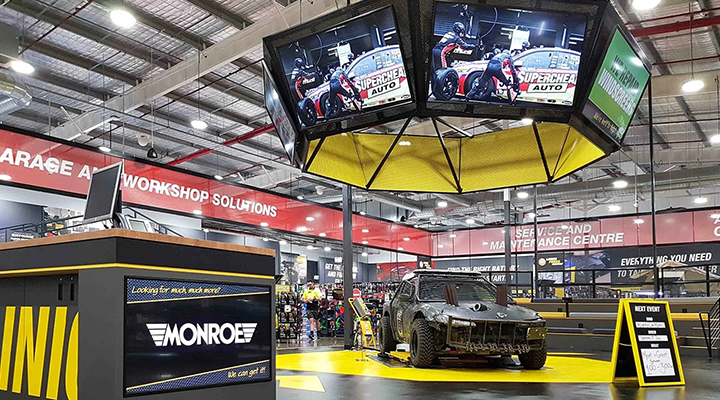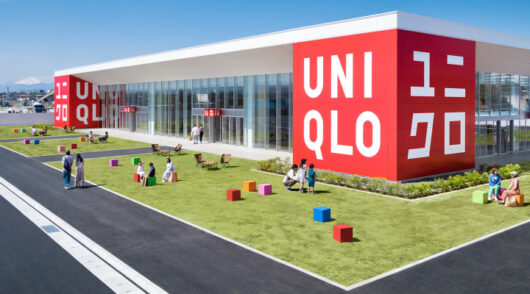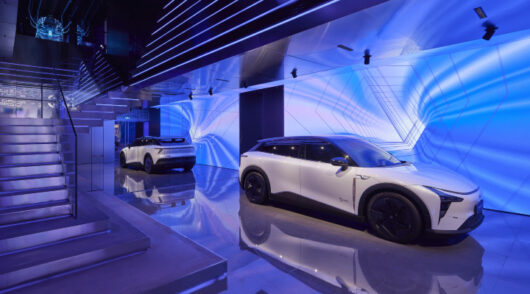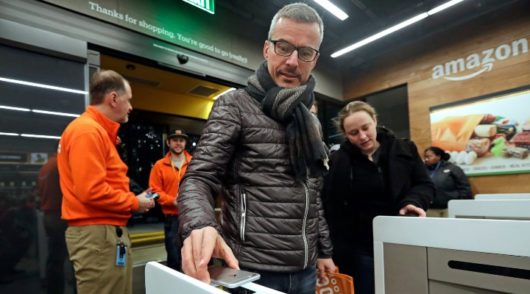As consumers return to physical stores in the post-pandemic era, delivering a great in-store experience has become more critical than ever, says a leading retail technology expert.
“Boring and undifferentiated retail is dead,” insists Neal French, director of Chrome Enterprise, Apac. “It’s all about experiences now.”
Consumers today have come to expect engaging, fun experiences in stores. They have experienced extensive advancements in e-commerce technology, so they are no longer just looking to buy something when they walk into a store, they want to have a memorable experience that they can’t get online. Shoppers are living in a digital era, and the use of in-store digital touchpoints such as interactive screens and self-service check out are critical to creating the perfect blend from online to offline.
The return to bricks-and-mortar retailing is fuelling a rebound in network expansion by many major brands worldwide. Ralph Lauren plans to open 250 stores globally during the next three years, fast-food giant McDonald’s says it will invest $130 million in new stores and renovations in Australia. David Jones promises its revamped Bourke Street, Melbourne flagship store will boast “an experience on every floor”.
French says the success of Australian cosmetics retailer Mecca – which has more than 100 stores across the country – highlights how experiential retailing can win the loyalty of consumers and drive them offline and into stores. The three-level Sydney flagship proved so popular, Mecca is building a six-level store in Melbourne that will dethrone the Sydney site as the southern hemisphere’s largest standalone cosmetics shop.
Moreover, established high street retailers are facing new competition from previously pureplay brands, like home-grown luggage label July, expanding their offer offline and creating more choice for consumers who prefer the tactile experience of browsing and selecting products.
But French says that despite the boom in e-commerce during the Covid pandemic – and accepting that some consumers have changed their purchasing habits permanently – 73 per cent of Australians prefer to shop in a brick-and-mortar store, according to the Adyen Australia 2022 Retail Report. That percentage is 14 per cent higher than the worldwide average of 59 per cent.
“The immediacy and intimacy of a physical store can never be replaced. They are part of our social fabric.”
He says consumers are actually pushing the move towards better in-store experiences rather than just seeing racks of clothes.
“A recent global survey suggested that 60 per cent of consumers expect more than half of the store to be built around the experience rather than products,” says French.
Make the experience relevant
Retailers hearing the experiential call must remember that customers want that experience to be relevant, French says.
A great example he cites is Canada Goose where dressing rooms have been converted into an experiential space where the temperature has been set to replicate icy-cold outdoor conditions the jackets are designed for. The environment is made even more realistic with ceiling-to-floor LED screens showing mountainous landscapes and snow, “projections of unexplored worlds”.
“So when you go in and try on a thermal jacket the temperature adjusts to minus two and suddenly you simulate Mount Everest – all brought to life by digital technology.”
French says the same approach can be adopted in many store types, replicating environments digitally, using LED wall displays, kiosks, interactive technology recording and simulating sporting actions – but retailers and brands need technology to make it effective.
“All of that is powered in some form by technology,” says French. “Technology is the underlying foundation to bring retail experiences to life.”
French cites two examples of engaging digital executions in Australia.
At make-up retailer Kiehl’s, customers are encouraged to “pick up a mask” treating them to a ‘lift-and-learn’ activation giving them a unique way to discover products and providing Keihl’s with valuable customer insights. As the product is lifted, digital content is automatically triggered to play on a larger-scale display.
“Kiehl’s has combined digital display technology, interactive touch solutions and a convenient point-of-purchase design that not only engages the customer in lifting the product, but also attracts attention from others in the store. This is an example of how you can build memorable and frictionless customer experiences.”
An example of an activation executed by Google, is where fast-food chain KFC knew that enhancing its digital strategy would drive more sales and lead to happier customers. Partnering with Entwined and Signagelive, Google created a solution for drive-through customers – which accounts for 70 per cent of its sales volume in Australia – that led to a significant reduction in food waste, using interactive multimedia display panels to confirm orders.
“This was a great opportunity to really focus on a retailer’s core business challenge and to help them use technology to deliver some real-world, high-impact results,” says French.
“The common thread between these very different examples is that they use technology to make the in-store experience feel more real and more human – which might sound counterintuitive given we are talking about technology, but technology must be seamless and unobtrusive.
“We often talk at Google about technology not getting in the way, how it needs to empower employees and to enhance the customer buying journey. The sweet spot comes when you deliver all three.”
The ‘digital canvas’
Widespread adoption of technology in stores has been hampered in the past by unreliable operating systems and technical glitches which can convert an exciting, engaging execution into an embarrassment with on-screen error messages leaving store staff helpless, typically wasting time and resources to get back online.
“The complexity of delivering an experience like the Canada Goose example makes the back-end technology and software critical. So, at Google we deliver this evergreen, simple digital platform, a canvas if you like, that we can build exciting and reliable experiences on.
“I often use the term ‘digital canvas’ with customers. I ask them to tell us what they want and let us worry about building that underlying platform and bringing these amazing experiences to life.”
If you’d like to learn more about digital retail solutions and how you can incorporate them into your in-store customer experience strategy, please reach out to The Google team who can bring your ideas to life through ChromeOS. Visit the Chrome Enterprise website to learn more.






